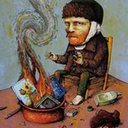Outbreak of scarlet fever associated with emm12 type group A Streptococcus in 2011 in Shanghai, China.
Märksõnad
Abstraktne
BACKGROUND
An unprecedented, large outbreak of childhood scarlet fever occurred in Shanghai between April and July 2011. Investigation of the epidemiology could enhance our understanding of the factors related to the outbreak.
METHODS
We retrospectively analyzed the demographic and seasonal characteristics of children with scarlet fever and the outcome. During the peak month of the 2011 outbreak, 45 GAS isolates recovered from pediatric patients and 13 (43.3%) GAS isolates recovered from 30 asymptomatic student contacts were characterized by emm typing, superantigen profiles, pulsed-field gel electrophoresis genotypes, mutilocus sequence typing and antimicrobial susceptibility.
RESULTS
The 2011 outbreak of scarlet fever started in April and peaked in May and June. Boys outnumbered girls (65.1% versus 34.9%). Preschool and primary school children accounted for 96% of cases. No severe outcome was found. emm1, emm12 and emm75 were identified among 58 GAS isolates, and 53 (91.4%) isolates belonged to emm12, st36. Ten pulsed-field gel electrophoresis genotypes were identified among emm12 GAS isolates, 43 (81.1%) shared SPYS16.001 genotype and the remaining 7 genotypes detected were related to SPYS16.001 closely or possibly. No streptococcal pyrogenic exotoxin A and streptococcal pyrogenic exotoxin M were detected in 58 isolates. All emm12 GAS isolates were resistant to azithromycin and clindamycin.
CONCLUSIONS
emm12 GAS strain caused the large 2011 outbreak of scarlet fever in Shanghai. Antibiotic resistance to macrolides and clindamycin in GAS is prevalent in Shanghai.






